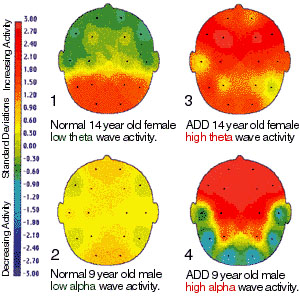ADHD Symptoms More Likely in Children with Lead or Mercury Exposures
 This in directly from Environmental Health News:
This in directly from Environmental Health News:
Children exposed to higher levels of mercury or lead are three to five times more likely to be identified by teachers as having problems associated with Attention Deficit Hyperactivity Disorder, according to a scientific study published today.
The study, of Inuit children living in Arctic Canada, is the first to find a high rate of attention-deficit symptoms in children highly exposed to mercury in the womb.
In addition, the Inuit children more often had hyperactivity symptoms if they were exposed to the same low levels of lead commonly found in young U.S. children.
Laval University scientist Gina Muckle said the findings are important because they show for the first time that the effects of mercury in children are not just subtle, but are actually noticeable to teachers. They “may be clinically significant and may interfere with learning and performance in the classroom,” the study says.
For lead, the school teachers reported much more frequent ADHD symptoms at levels far below the CDC's newly developed health guideline. Dr. Bruce Lanphear, of Simon Fraser University in Vancouver, said evidence is mounting that toxic compounds are “shifting children’s behavior...There seem to be a whole host of different toxicants that are associated with ADHD."
One of the most intriguing findings was that mercury was linked to attention deficits while lead was associated with hyperactivity. The difference may be the timing of the exposures: in the womb for mercury and during childhood for lead. The findings "suggest the brain may be sensitive to different environmental chemicals at different times in development," said Harvard epidemiologist Joe Braun.
First, there are no safe levels of lead, but teachers being able to identify ADHD behavior among kids who have levels of exposure "far below" even the new CDC recommendations is disconcerting indeed.
Second, this is why coal plant and cement plant rules to reduce Mercury and lead emissions as much as possible are a good thing and must be implemented ASAP, not delayed.
Third, none of these symptoms have ever been included in an official risk assessment of any cement plant, lead smelter, gold mine, coal plant or any other facility releasing lots of these metals into the environment. EPA regulations lag decades behind the science in terms of plugging in toxicological effects identified in the scientific literature. Over-regulated? No, not even close when you have no idea what kind of health problems your facility is causing.
Finally, the country is seeing an epidemic of ADHD. We express official dismay at this, but as far as we know, little if any attention is being paid by industry or government to try and prevent the condition through limiting exposure to toxins that can cause it, even though, "there seem to be a whole host of different toxicants that are associated with ADHD."
This is not a fatal condition. It's not a disease like cancer, or as serious as a heart attack or stroke. But does anyone doubt the challenges facing a child with moderate to severe ADHD symptoms?
This is one more consequence of pollution you never see in the paperwork, only in real life.
